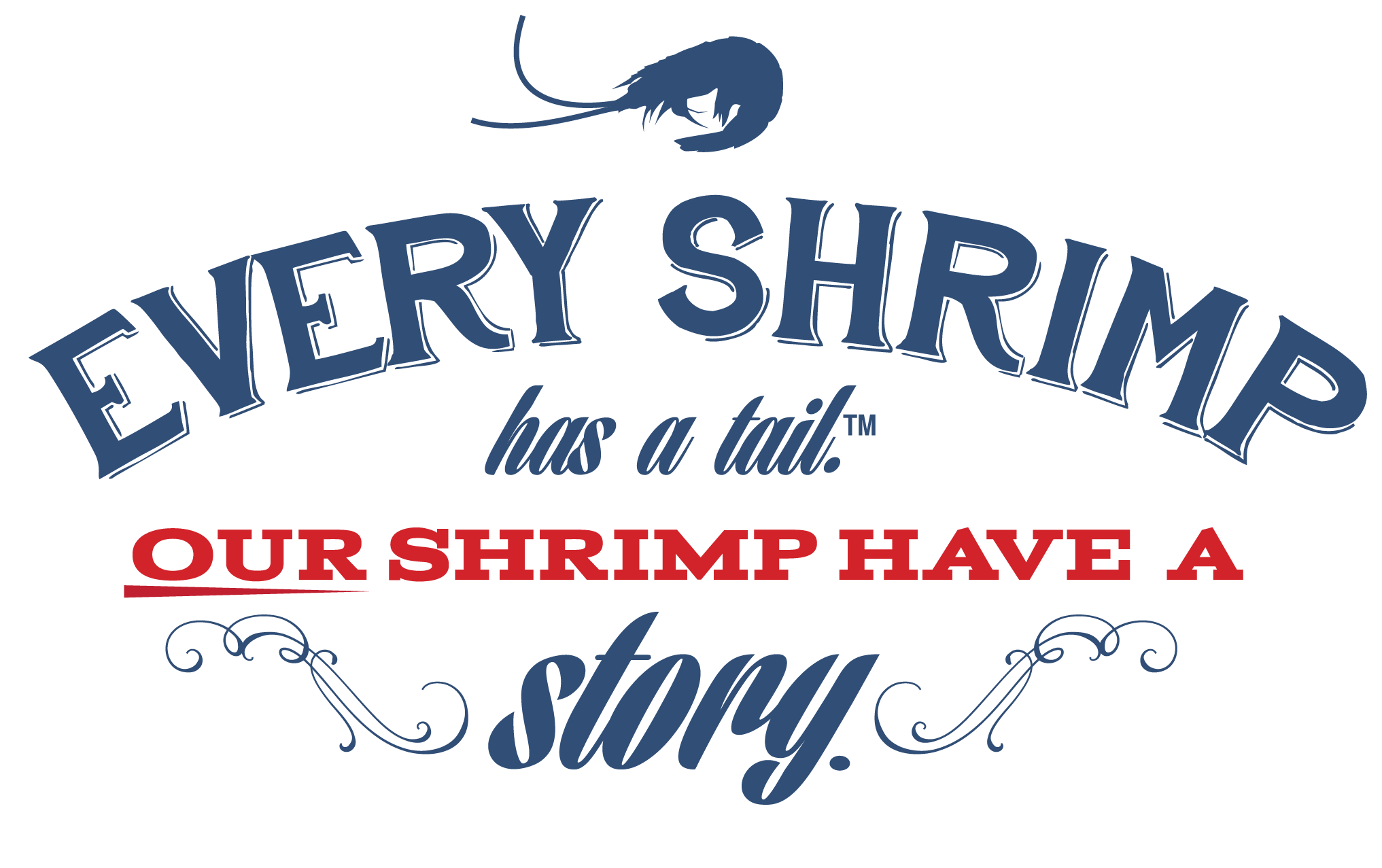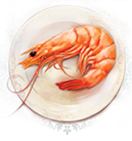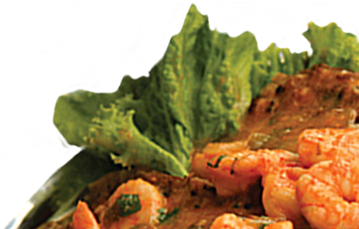Frequently Asked Questions
What are the primary areas/states where Wild American shrimp are harvested?
What types of Wild American shrimp are there?
- White shrimp are typically found in the brackish waters and estuaries with low salinity and are a favorite choice among boat captains. They are caught in inshore waters with silty bottoms during the late summer and fall and yearround in offshore waters.
- Brown shrimp are found near the bottom of the nutrient-rich Gulf and South Atlantic waters, which gives them their robust flavor. Like white shrimp, they are caught in inshore waters with silty bottoms during the late summer and fall and year- round in offshore waters.
- Pink shrimp, known for their delicate, sweet flavor and pearl-like texture can be found in waters off Florida and the Gulf Coast region. They are caught in waters with sandy or coarse bottoms as opposed to silty bottoms, which are typical off of southern Florida.
Are Wild American shrimp available year round?
How can I buy them?
What are the best online sources and which grocery stores sell Wild American shrimp?
FOR THE HOME:
Consumers can visit www.americanshrimp.com/for-the-home/ for a full list of purchase online retailers and grocery stores that carry Wild American shrimp. To ensure that they are buying authentic wild-caught shrimp, consumers should look for the Wild American shrimp logo or a designation of “Wild Caught Gulf Shrimp” on products in the frozen seafood section of their grocery stores. Note that this type of shrimp may not be found in every location of every chain due to local store buying prerogatives. Consult the seafood marketing programs for the various Gulf and South Atlantic states for directories of additional outlets where Wild American shrimp can be found.
FOR BUSINESS/WHOLESALE BUYERS:
Food service buyers, retail buyers and distributors can contact members of the American Shrimp Processors Association to source Wild American shrimp for their establishments. Each processor has a profile at www.americanshrimp.com/association/membership/ to help buyers learn more about what types of shrimp they process, types of customers they typically process product for, brand names, along with photos and stories about each processor.
How are Wild American shrimp a sustainable resource?
Wild American shrimp are a naturally renewable annual crop and sustainable resource that has consciously not been overfished to ensure their long-term survival. Shrimp landings, or the number of pounds caught annually, in the Gulf and South Atlantic have been stable for over 60 years.
In addition, American shrimpers have a long heritage of serving as marine conservationists and support these harvesting practices that provide for today’s needs without damaging the ability of the shrimp to reproduce and be available for future generations.
Are they healthier than imported shrimp? Fresher? In what ways?
Wild American shrimp are harvested from a natural environment free from harsh chemicals, pesticides, antibiotics and residue, which might be found in pond-raised shrimp from foreign countries. These standards are appealing to health-conscious culinary professionals and consumers who want to know what is in their food and where their food comes from.
Since they are spawned in a natural marine environment and are harvested and frozen instantly, they naturally are fresher and taste better. In addition, the nutrient-rich waters of the Gulf and South Atlantic create a unique flavor profile that is naturally absorbed into wild-caught shrimp to give them superior taste.
They are a superior ingredient and nutritious choice for discriminating diners. Wild American shrimp are a great source of lean protein, omega 3 fatty acids as well as Vitamins D, B12, B6, iron, copper and zinc.
Shrimp have been deemed part of a heart healthy diet. A study conducted by researchers from Rockefeller University and Harvard School of Public Health found that shrimp do not negatively impact the lipoprotein profile of healthy individuals. The study findings further showed that eating shrimp did not increase levels of damaging VLDL cholesterol. Shrimp also lowered unhealthy triglyceride levels and the ratio of total cholesterol to HDL cholesterol and LDL to HDL cholesterol compared to an egg or low-fat baseline diet.
http://www.livestrong.com/article/495447-how-bad-is-the-cholesterol-in-shrimp/
Another article on Healthline.com has consistent conclusions.
http://www.healthline.com/health/shrimp-cholesterol-and-heart-health/
In what ways are wild-caught shrimp good for the American economy?
By asking for Wild American shrimp at your restaurant or seafood counter, you’re supporting an entire industry and preserving a lifestyle and heritage that has spanned multiple generations of families. The industry represents thousands of jobs in the Gulf and South Atlantic states — from the vessels to the docks to the processors to the market. The industry is vitally important to the economy in many small Coastal towns, where the shrimping industry is often the largest employer.
We consider Wild American shrimp a part of the Buy American movement. Buying these shrimp is essentially “buying from your neighbors” — sometimes across the country – but your neighbors nonetheless.
How long have wild-caught shrimp been harvested in the USA?
What accounts for their growing popularity?
Wild American shrimp have been harvested since the early 1800s.
Shrimp have long been considered the most popular seafood in the United States. They are an easy ingredient for the home cook or professional chef to prepare in many ways such as grilled, fried, sautéed, steamed or boiled.
The preference for Wild American shrimp has intensified over the last 10 years as more culinary professionals are supporting the “farm to table” movement, are recognizing the flavor superiority and prefer sourcing fresh and local ingredients for their recipes. Studies show that if given a choice between imported or Wild American shrimp, 95% of people would select wild-caught shrimp.
What about the pricing of Wild American shrimp?
Are they more expensive than other types of shrimp?
Wild American shrimp tend to cost a little more than mass-produced imported shrimp. This is consistent with most locally produced, locally grown products. They simply cost more to produce. They are a premium and better-tasting ingredient harvested directly out of the Gulf and South Atlantic by hard working Americans. They are special, and the flavor is worth the difference.
Supporting Wild American shrimp is much more than just choosing a healthier, better tasting and better quality ingredient. It is a tangible patriotic gesture in support of a longstanding American industry that works tirelessly each year to bring this premium product from the Gulf to the table.
The American Shrimp Processors Association (ASPA) represents and promotes the interests of the domestic, U.S. wild-caught, warm water shrimp processing industry along the Gulf Coast and South Atlantic. Their mission is to support the industry with tools and strategies to help it not only survive, but to thrive. Their efforts also include raising awareness with retail establishments, the food service industry and consumers about the benefits and superior qualities of U.S. domestic wild-caught warm water shrimp.


